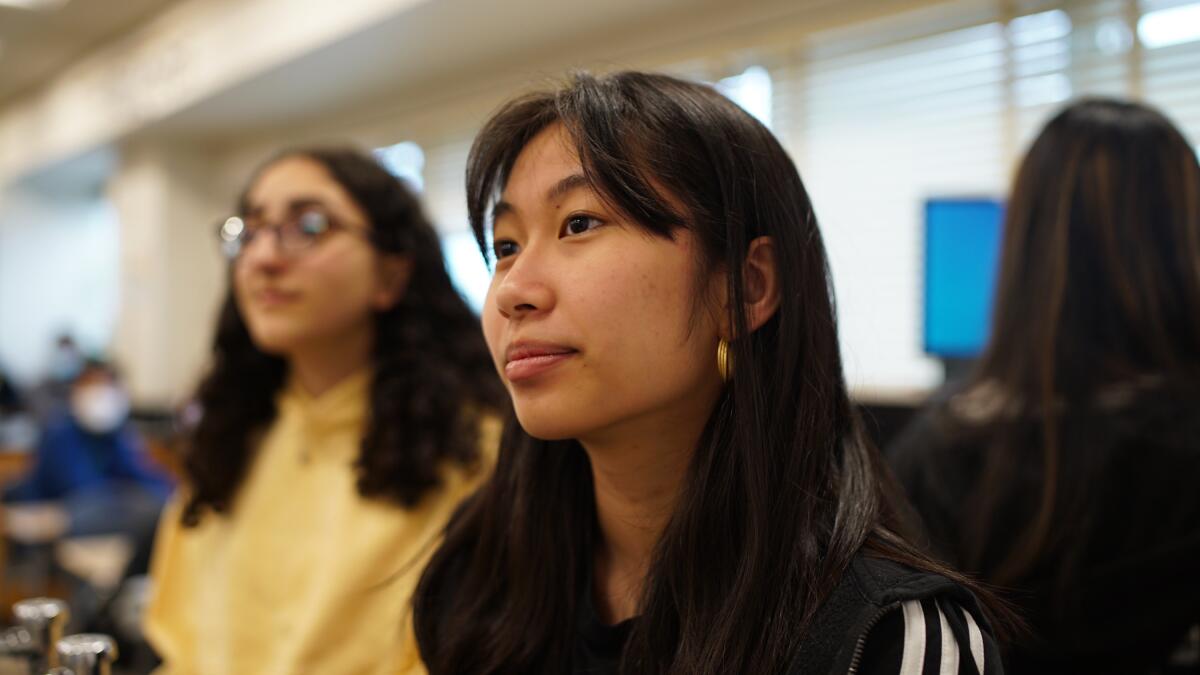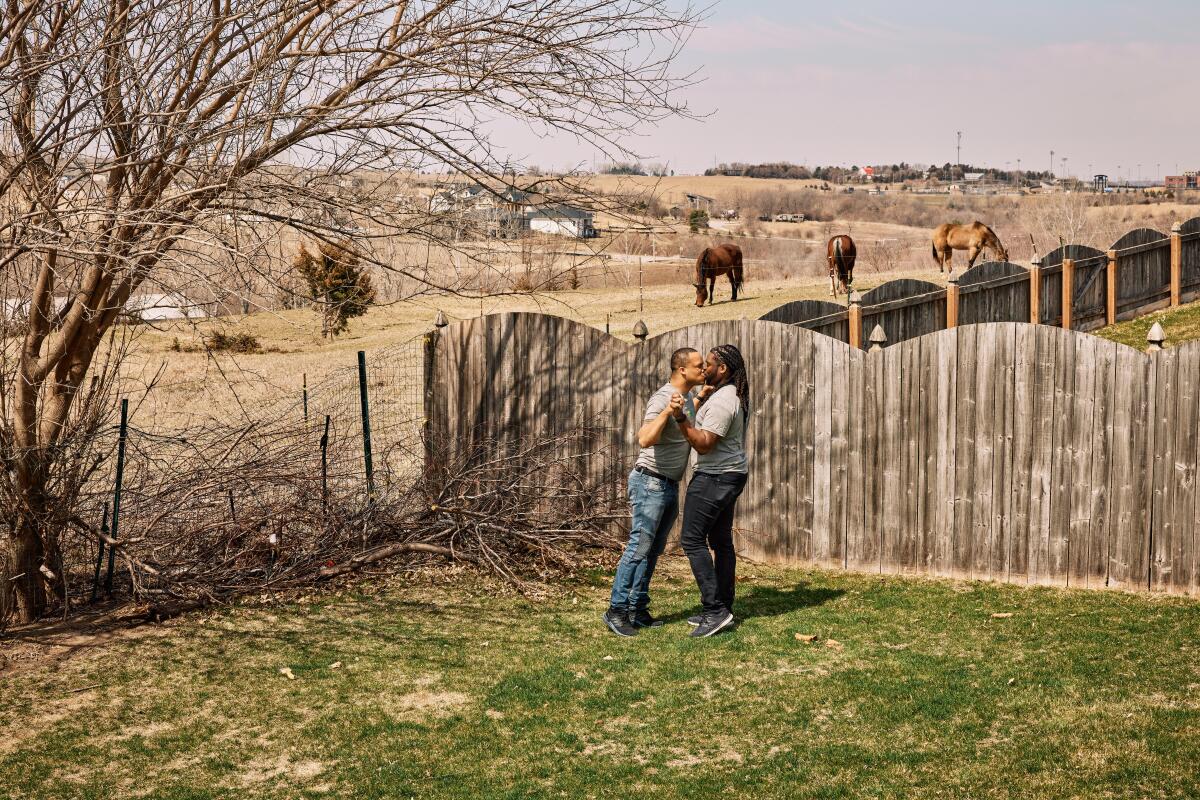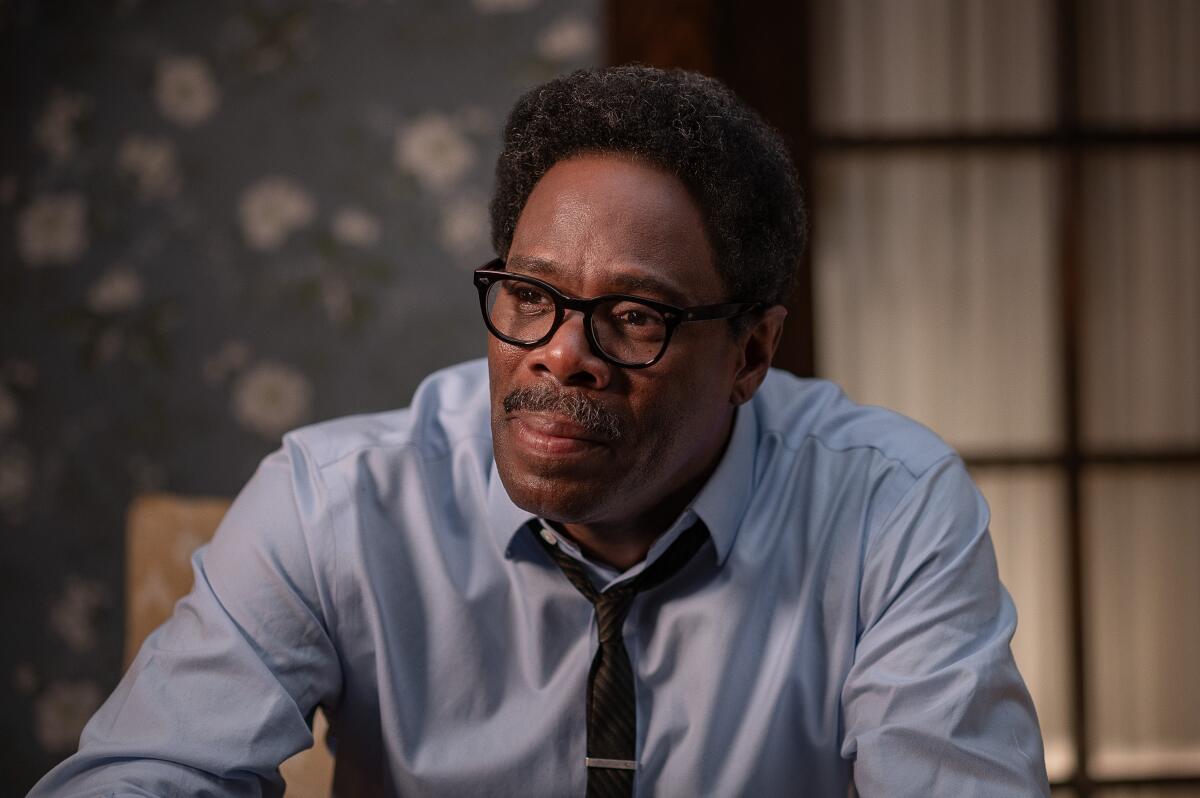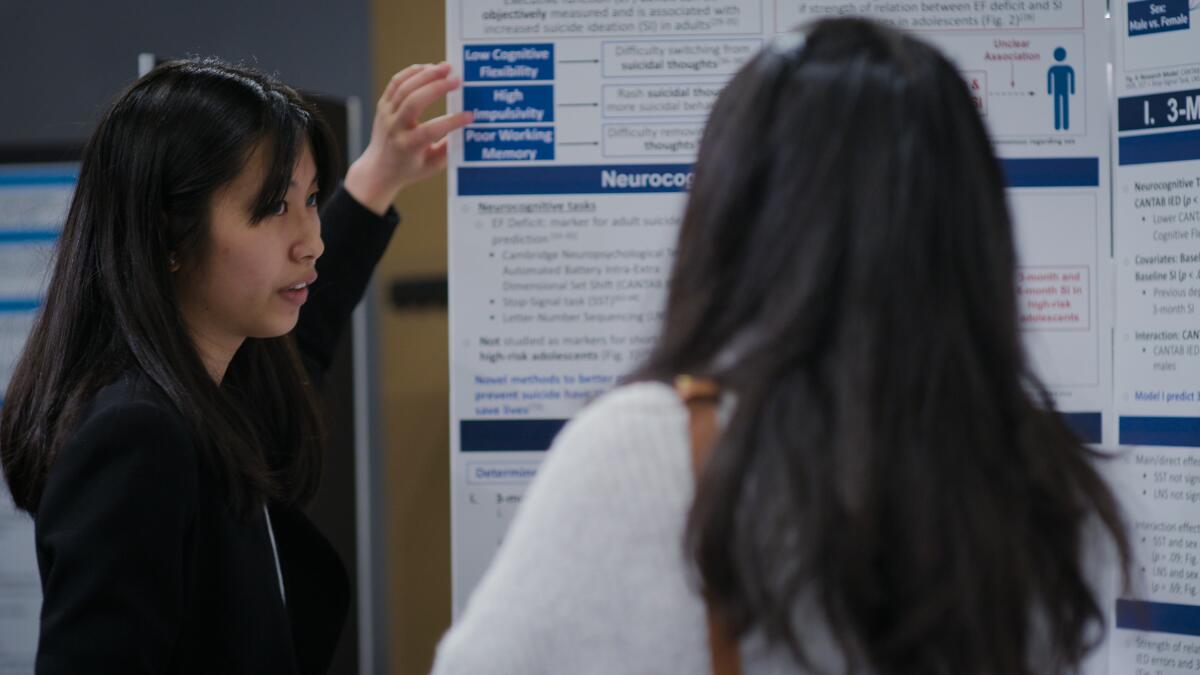Meet the unlikely TV star who developed a tool to help reduce teen suicide

- Share via
Welcome to Screen Gab, the newsletter for everyone who’s ever wondered, “What should I do for my science project?”
The teen stars of National Geographic’s new docuseries “Science Fair,” including Natasha Kulviwat, come up with some pretty impressive answers as they vie for a spot at the granddaddy of ‘em all, the International Science and Engineering Fair (ISEF). Read more about the series, and Kulviwat’s own project in this week’s Guest Spot.
Also in Screen Gab No. 110, we reconsider “Reacher” in advance of the Season 2 premiere and offer streaming recommendations for your weekend.
You are reading Screen Gab newsletter
Sign up to get recommendations for the TV shows and streaming movies you can’t miss, plus exclusive interviews with the talent behind your favorite titles, in your inbox every Friday
You may occasionally receive promotional content from the Los Angeles Times.
ICYMI
Must-read stories you might have missed

7 essential Norman Lear TV shows and where to watch them: Whether you’re figuring out where to start or where to catch up with your old favorites, here’s our guide to the best TV series from the legendary writer/producer, who died this week at 101.
The best TV shows of 2023: Television critics Lorraine Ali and Robert Lloyd weigh in on the series they enjoyed most in 2023, including “Poker Face,” “Reservation Dogs,” “Mrs. Davis,” “I’m a Virgo” and more.
The best movies of 2023 — and where to find them: The best movies of 2023 include “Oppenheimer,” “Past Lives” and “Poor Things,” according to our critic Justin Chang.
The year women saved Hollywood: Winning the box office, playing record-setting concert tours, rallying striking unions, shaking up TV: Women ruled pop culture in 2023.
Turn on
Recommendations from the film and TV experts at The Times

“We Live Here: The Midwest” (Hulu)
Running at under an hour, Hulu’s “We Live Here” provides a series of snapshots of LGBTQ+ families living in the Midwest, who weigh in on what it’s like to live in small communities where acceptance isn’t always a given. Among the couples featured are Mario and Monte, a Black gay couple with a baby girl living in Nebraska; Katie and Nia, an Iowan transgender/queer couple with five children; Russ and Mark, a gay couple in Ohio; Courtney and Denise, a lesbian couple living on a Kansas farm with a son; and Debb and Jenn, a transgender couple who co-parent two daughters in Minnesota. The common thread among the families is their normalcy — they’re people working jobs and raising kids — and they might just happen to be your neighbors, which is really the point of this documentary. In some places, change and acceptance of gender and sexual identity can feel like a challenge, but in sharing their experiences, these families are simply trying to nudge the needle forward. —Maira Garcia

“Rustin” (Netflix)
Bayard Rustin mentored the Rev. Martin Luther King Jr., was imprisoned as a conscientious objector during World War II, lived a relatively open gay life in midcentury America, recorded an album, appeared on Broadway and organized the 1963 March on Washington. Despite his remarkable résumé, though, his role in the civil rights movement has often been treated as a footnote in the stories of other men. “Rustin,” written by Julian Breece and Dustin Lance Black (“Milk”) and directed by George C. Wolfe (“Ma Rainey’s Black Bottom”), is here to correct the record. Featuring the extraordinary Colman Domingo as its charismatic, impassioned subject, the film makes Rustin the fulcrum of a turning point in the movement, marshaling the fractious energies of the NAACP, CORE, SNCC, SCLC and labor unions to stage the largest peaceful demonstration in U.S. history at the time. Perhaps most satisfyingly, “Rustin,” acknowledging that organizing requires, well, organization, paints its lead character as both political radical and logistical genius: Its climactic moment isn’t the famed “I Have a Dream” speech, but a rousing description of the buses, port-a-lets, chartered flights and peace officers required to give King his unforgettable platform. —Matt Brennan
Catch up
Everything you need to know about the film or TV series everyone’s talking about

I know I’m taking my credibility in my hands when I tell you this: “Reacher” Season 2 (Amazon Prime Video) is a fine old time.
Yes, I’m the guy who previously had his fun lampooning the outré hypermasculinity of Season 1, and I stick by my guns — distinctly human-sized, compared to star Alan Ritchson’s Incredible Bulk guns — that those episodes are unintentionally hilarious. Thus my unbreakable habit of referring to the show as “REACHER!” in all contexts.
But hear me out. Season 2, premiering Dec. 15, is intentionally hilarious. They’ve made all the right changes. Yes, the show is still 100% Might-Makes-Right and Ritchson’s former military policeman Jack Reacher (!) has never met a Gordian knot he couldn’t punch into submission. But this season actually has fun with it all, fully embracing the charm of this man-mountain solving every problem by crushing skulls to powder with his bare paws (or flexed pecs, or whatever). And somehow, he has become more human in the exchange. It’s a paradox for the ages.
What’s the plot? Not important. What is important is the introduction of friends from his old Army Special Investigations Unit. They chuckle at his “Clint Eastwood? What a pansy!” machismo. Having people around who aren’t scared of him, who poke fun at him and actually like him — coupled with his awkwardness around women he likes — makes Reacher (!!) downright, um, likable.
Well, that and the fact that he gets bona fide laugh lines now, enhanced by Ritchson’s earnestly Hulking delivery. When a child has just barely survived an assassination attempt on herself and her mother, Reacher (!!!) “comfortingly” tells her as she goes into hiding, “It won’t be long; we just need to kill a few more people.”
When his very smart partner tracks someone through their use of a video game, she tells him he might enjoy gaming: “You’d like a first-person shooter.” He says without a smile, “I am a first-person shooter.”
And when persuading someone to give him information, the blunt instrument says with that same flat directness, “Hi, Grant. If you yell or make noise, I’ll tear your trachea out and your last thought will be, ‘My God, he really did it.’”
So if you like your unstoppable forces with a few laughs and a (little) bit of humanity … I can’t believe I’m saying this, but … “REACHER!” Season 2 may be just the ticket. —Michael Ordoña
Guest spot
A weekly chat with actors, writers, directors and more about what they’re working on — and what they’re watching

Based on the winsome doc that premiered at Sundance in 2018 and went on to win an audience award at SXSW, “Science Fair: The Series” simply expands the fun — sort of like how heat expands gases. (Right? I became an entertainment journalist because I didn’t ace AP chemistry.) Premiering Sunday on National Geographic, and streaming starting Wednesday on Hulu and Disney+, the three-part docuseries follows a new crop of students on their journey toward “the most competitive science fair on the planet.” One of the series’ subjects, Natasha Kulviwat, graciously stopped by Screen Gab to talk about her love of “Legally Blonde,” her admirable work on the science of teen suicide and more. —Matt Brennan
What’s the movie or TV show that you and your friends can’t stop talking about?
The “Hunger Games” prequel, “Ballad of Songbirds and Snakes.”
What is your go-to “comfort watch,” the movie or TV show you go back to again and again?
“Legally Blonde” [Max, Pluto TV]. It’s such an iconic feminist empowerment movie and rewatching it always makes me feel so powerful.
How would you explain your project for the International Science and Engineering Fair to someone like me who knows nothing about science and engineering?
The project you see me working on in “Science Fair” was conducted when I was a freshman/sophomore. Suicide is the second leading cause of death in adolescents, yet there still exists no objective marker to predict suicide risk. I investigated neurocognitive games, which measure neurocognitive vulnerabilities such as impulsivity, cognitive flexibility and working memory.
I analyzed the neurocognitive task scores of over 200 high-risk adolescents that were hospitalized for previous suicide attempts and evaluated the association with suicide ideation and attempt following discharge from the hospital. I found that two neurocognitive tasks could be used as effective, noninvasive and low-cost markers that can be administered on a mobile device in under seven minutes. From this data, I coded a suicide risk calculator to serve as a pilot demonstration for how an objective suicide risk tool could supplement clinicians’ decisions. This research further fueled my passion to continue. This year and last year, I looked into the human brain to find protein biomarkers for suicide risk and found some promising results!
What surprised you most about the process of making a docuseries?
I was in middle school when the first “Science Fair” documentary came out and I still remember being in the audience and looking up at all the brilliant high school students and how they were changing the world. The biggest surprise for me about the docuseries was the fact that I was in it! Also, I was so fortunate to be able to work with such a dedicated and passionate film crew. They always made me feel comfortable while filming. There were so many times where I either forgot I was mic’d or I lost the mic so you can imagine how grateful I was for the amount of patience they had. Overall, I had so much fun filming and it was a dream come true!
The complete guide to home viewing
Get Screen Gab for everything about the TV shows and streaming movies everyone’s talking about.
You may occasionally receive promotional content from the Los Angeles Times.



